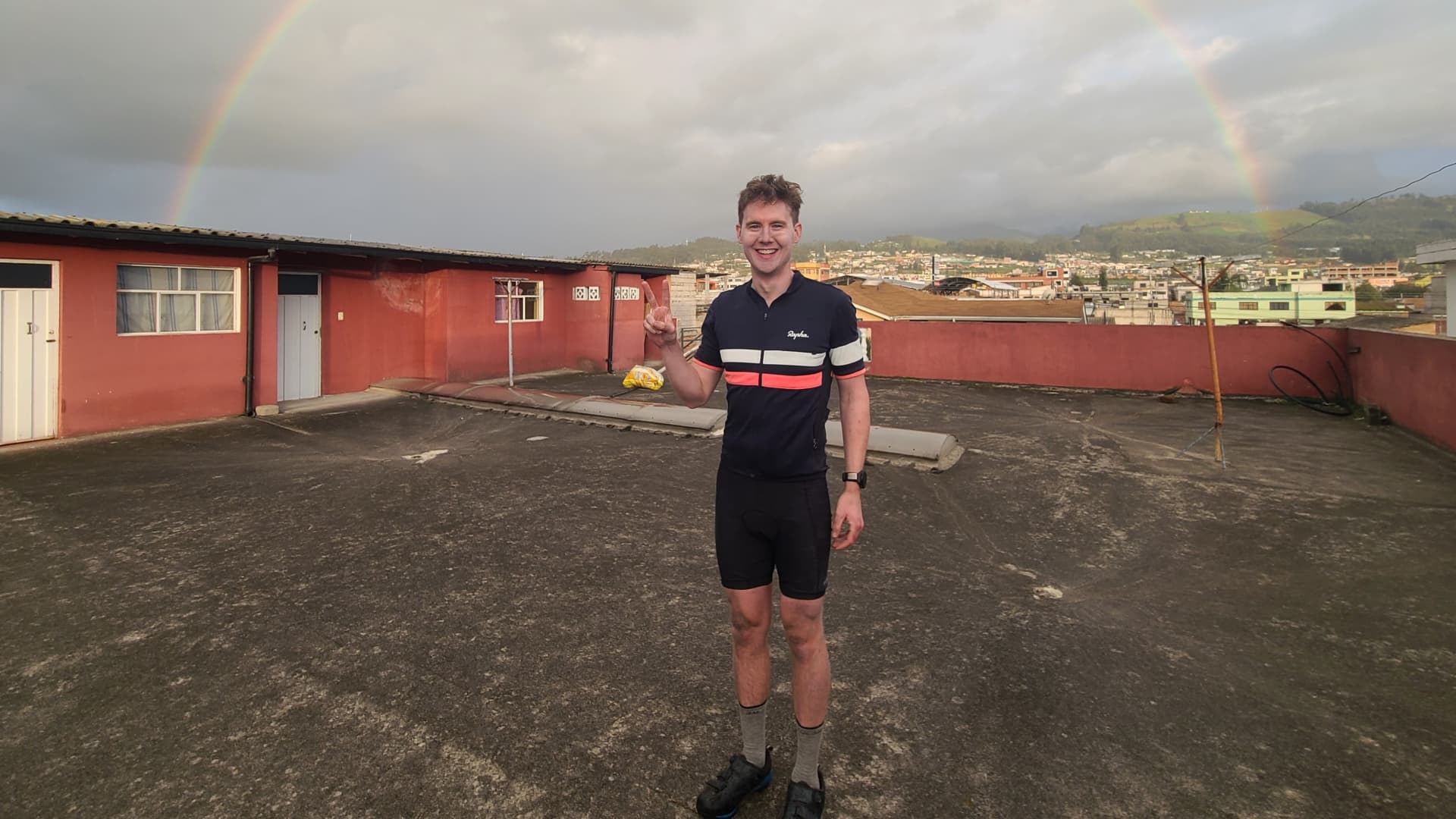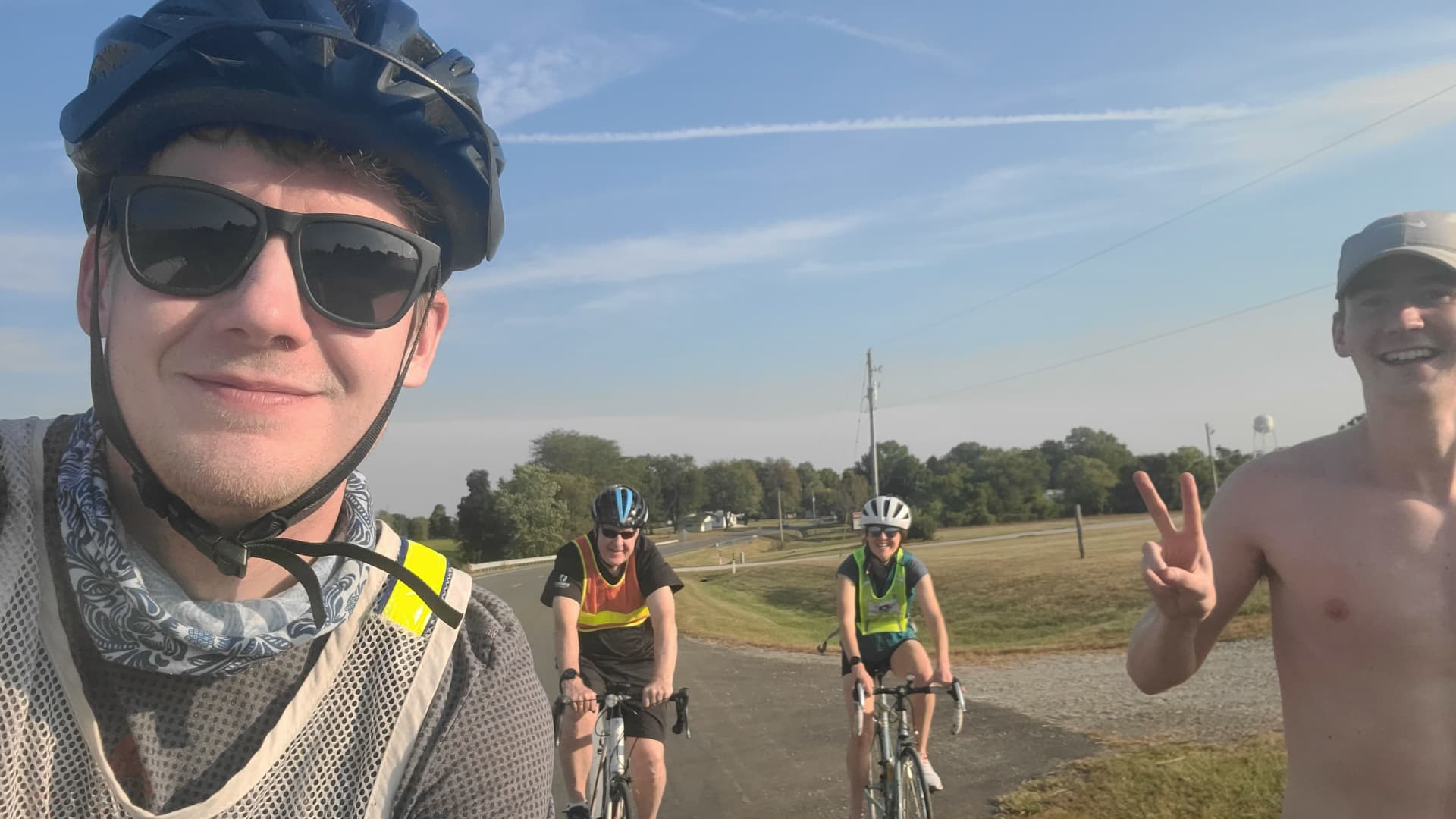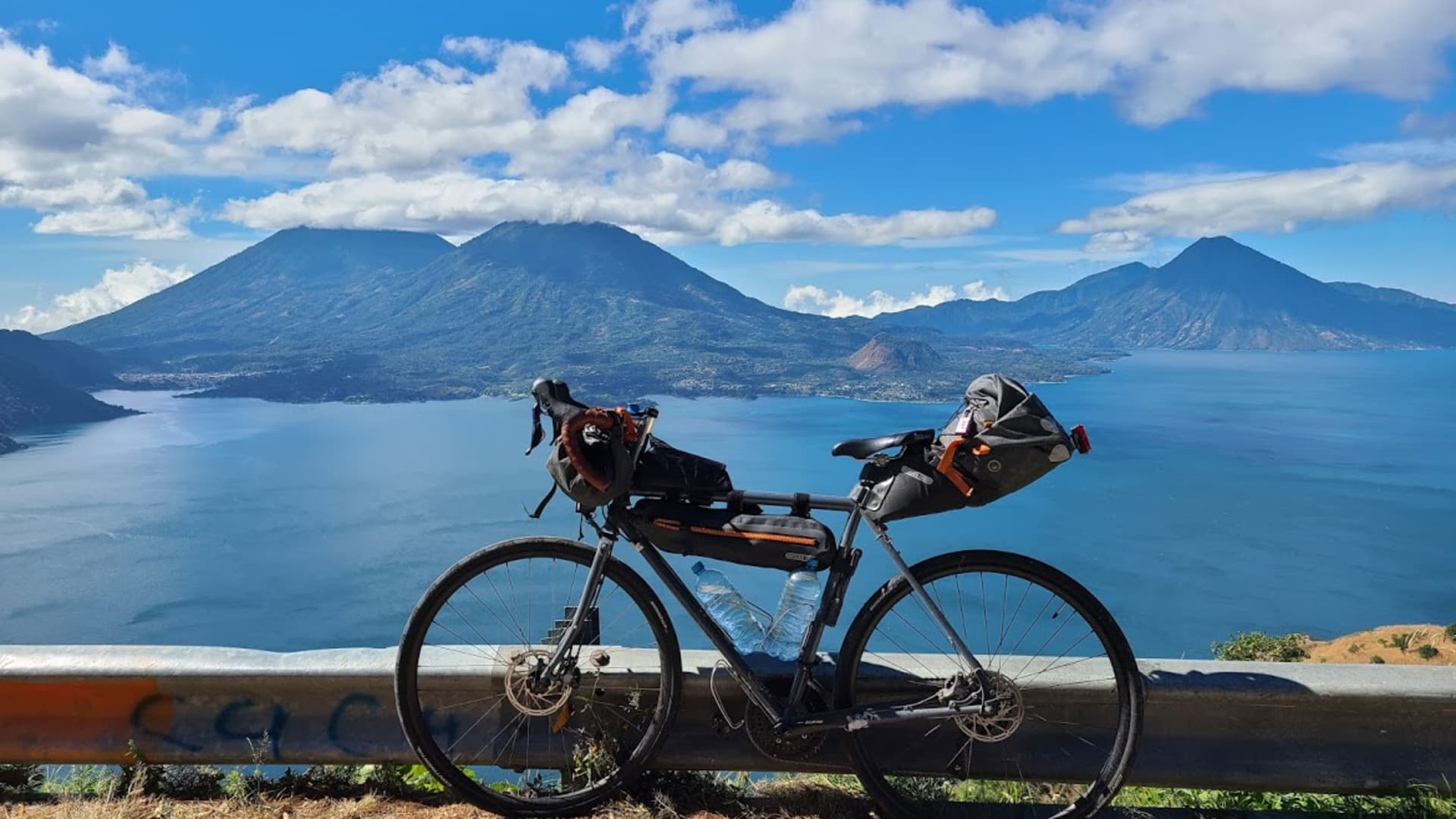
Driven by the suicides of two close friends, Andrew Mortensen set off on the ride of a lifetime last August when he rode his bike for a whopping 17,000 miles over eight months — from the U.S. to South America amid a global pandemic. So far, he has raised more than $17,000 for one of the biggest issues facing the LGBTQ community.
"Two of my closest friends took their own lives over the past two years. I wanted to raise money for The Trevor Project to support both my friends and anyone else who's coming out," the 29-year-old tells CNBC Make It. "I realized through my own coming out and through meeting more and more people that this journey is not easy."
Founded in 1998, The Trevor Project provides crisis intervention and suicide prevention services to the LGBTQ community under 25.
We've got the news you need to know to start your day. Sign up for the First & 4Most morning newsletter — delivered to your inbox daily. >Sign up here.
According to the organization's National 2021 LGBTQ Youth Survey on Mental Health, 42% seriously considered taking their own lives last year, including more than half of transgender and nonbinary youth.
The study also found that LGBTQ youth who were subjected to conversion therapy reported more than twice the rate of attempting suicide in the past year compared to those who were not.

Mortensen, who volunteers part-time at The Trevor Project taking calls from youth who need someone to talk to, said he decided to go for a long-distance ride after taking a buyout from his job as an analyst at a major airline amid the pandemic.
Money Report
"I was living at home in my parents' basement, and for good reason. I'm paying off my student loans and being financially responsible, but it didn't help in the situation," he says. "So I started to ride my bike more and more as a way to get out — and still have that sense of freedom and fitness and movement."
With an initial goal of riding 4,400 miles across America — from Neah Bay, Washington to Yorktown, Virginia — Mortensen equipped himself with only a change of clothes, some nutrition bars and his cell phone to document his journey.
See Andrew's entire journey tracked on GPS.
The journey begins
After dipping his rear tires into the Pacific Ocean in Neah Bay (the northwesternmost point in Washington state) on August 25th, Mortensen set off and never looked back — making his way past Oregon's Cannon Beach, Idaho's White Bird Hill summit and Montana's Lolo Pass.

"People helped me in a number of ways just spontaneously," Mortensen recalls. "I got a flat tire in Oregon and almost immediately a car stopped, picked me up and took me into the nearest bike shop without question."

Mortensen says he would often ride for seven to eight hours a day only to arrive to a city and nothing would be open.
"I had to occasionally knock on doors, just to find dinner or I would go to a gas station and eat cookies for dinner," he says. "Normally that wouldn't be too difficult, but after riding so long, it was really challenging at times."
On Day 32, Mortensen's family joined him in Carbondale, Illinois, and rode their bikes for the last 20 miles of his leg that day.


For lodging, Mortensen says he slept in hostels, hotels, a tent and even the homes of people he didn't know.
"I stayed with complete strangers who would offer me a place to stay," he says.

Exactly 43 days after starting his journey, Andrew arrived at Yorktown, where he dipped his front tires into the Atlantic Ocean. At that point, he had reached his fundraising goal of one dollar for every mile ridden: $4,400.

But it wasn't enough.
"When I got to the other side [of the U.S.], the reception and the fundraising had gone so well that I actually decided to continue down to Key West, Florida. And the same thing happened there … I kept going," he says.
The journey continues
Riding back up Florida and into the Bible Belt, Mortensen says his bright orange Trevor Project T-shirt sparked conversation.

"Particularly in the South where I imagined the reception would be a little more challenging, it was actually the complete opposite," he explains. "At gas stations, at ice cream shops, just about anywhere I would stop, it felt like people would come up to me and tell me their own story."

Mortensen says it was after reaching Texas, he decided to cross into Mexico.

"I took my journey one step at a time," he says.

That journey continued into the rest of Central America: Guatemala, El Salvador, Honduras, Nicaragua, Costa Rica and Panama.

"I never planned to go to South America until — until I was in Panama," Mortensen says.
Next stop: Colombia — then Ecuador.

In Peru, "things just turned upside down," Mortensen recalls, after a truck knocked him off the road. "When I got to Lima, I took about a week off to recover and to really think about whether I wanted to continue. But ultimately the fundraising and this commitment to get to the end was something that kept me going."

Mortensen says that in places where the quarantines were really strict and restaurants would close down before he could even get into the town, he was surprised by the generosity of complete strangers.

"Moms would step out into the street and offer me food or offer to cook me dinner," he says, adding that he used his savings and some small gifts from close family to pay for the trip.
The journey ends
On April 24, 2021, Mortensen reached his final destination: the southernmost point of the continent — the Patagonia Region in Chile — nearly 17,000 miles from his starting point.

"The last night a boat captain invited me to stay on the ferryboat with the crew instead of sleeping outside in freezing weather," he recalls. "The warmth and the graciousness of people throughout the whole trip was remarkable. The biggest highlight of the trip for me was definitely the people, hands down."


"We are so thankful for Andrew's generous support and determination, which will help us ensure that we are there for every single young person who needs us, 24/7 and for free," Rob Todaro, a spokesperson for The Trevor Project, tells CNBC Make It.
Todaro says the funds Mortensen raised will help The Trevor Project "train a record number of crisis counselors and continue to provide all of our crisis services 24/7 — and for free — and expand our innovative advocacy, research, and education programs."
Mortensen says his takeaway from his experience is that the world to him now feels a lot smaller.
"I look at a map now and it feels like my neighbors are in Colombia or Mexico," he says. "It's made me realize that we're all connected. There are no borders. There are no enemies. We're all just a big group of people, and everyone matters."
If you're in crisis, there are options available to help you cope.
- For LGBTQ youth thinking of suicide and in need of immediate support, call the TrevorLifeline at 1-866-488-7386.
- For confidential support available 24/7 for everyone in the United States, call the National Suicide Prevention Lifeline at 1-800-273-8255.
Chris DiLella is a producer for CNBC's special projects unit.
Sign up now: Get smarter about your money and career with our weekly newsletter






